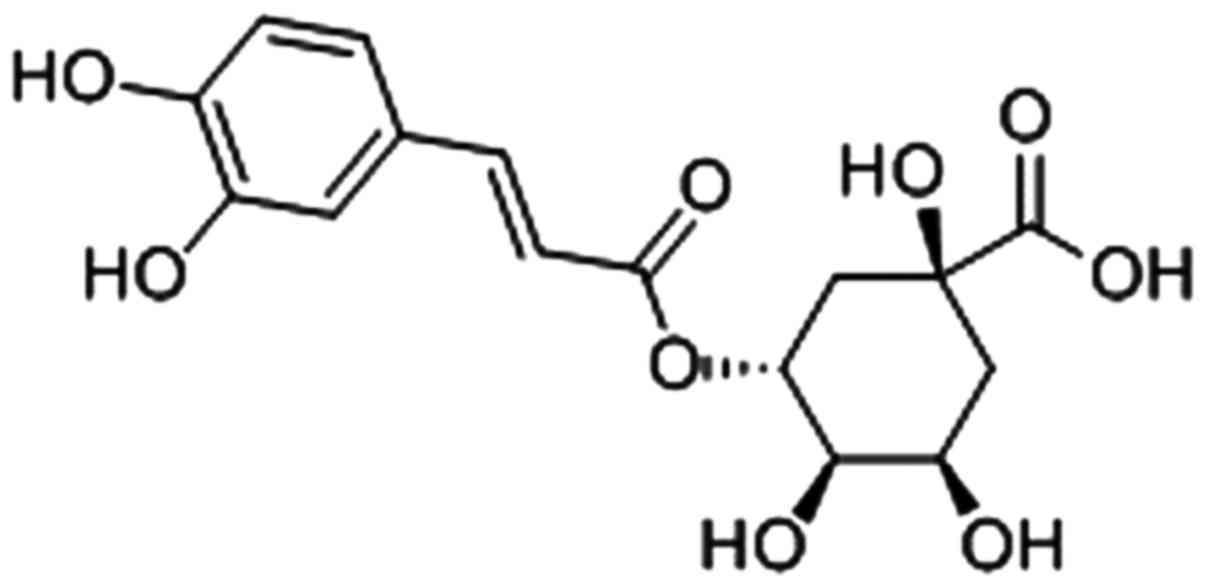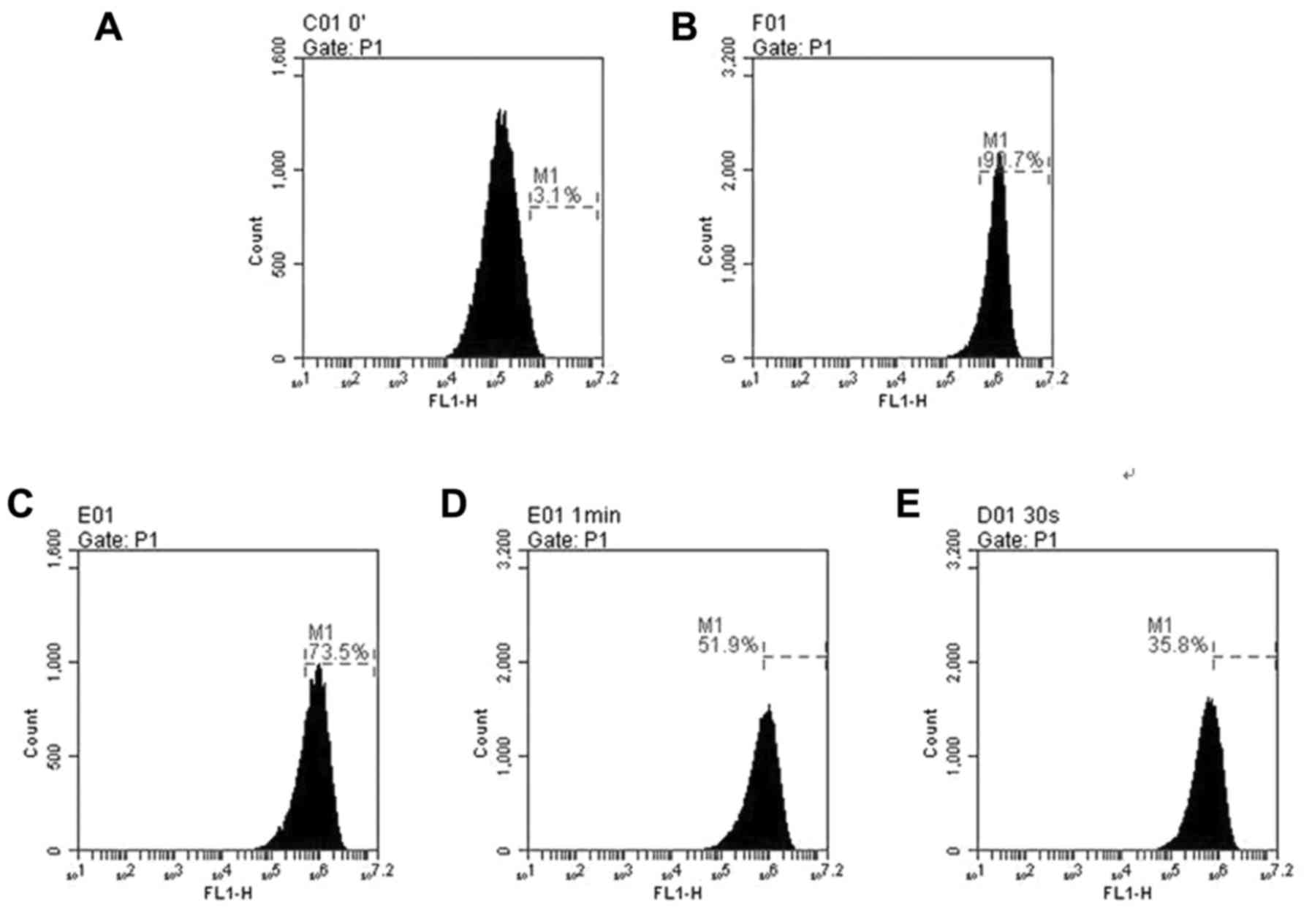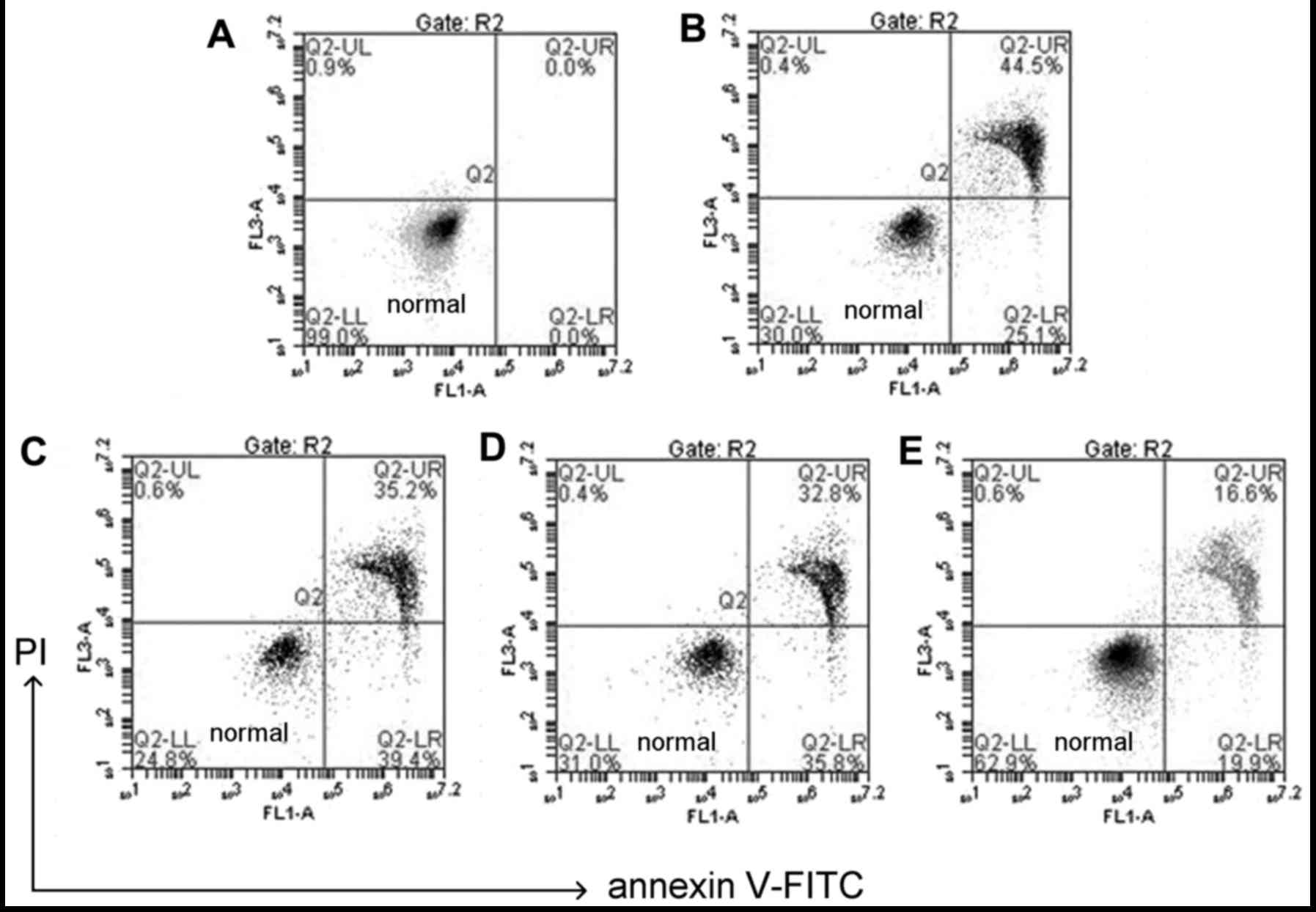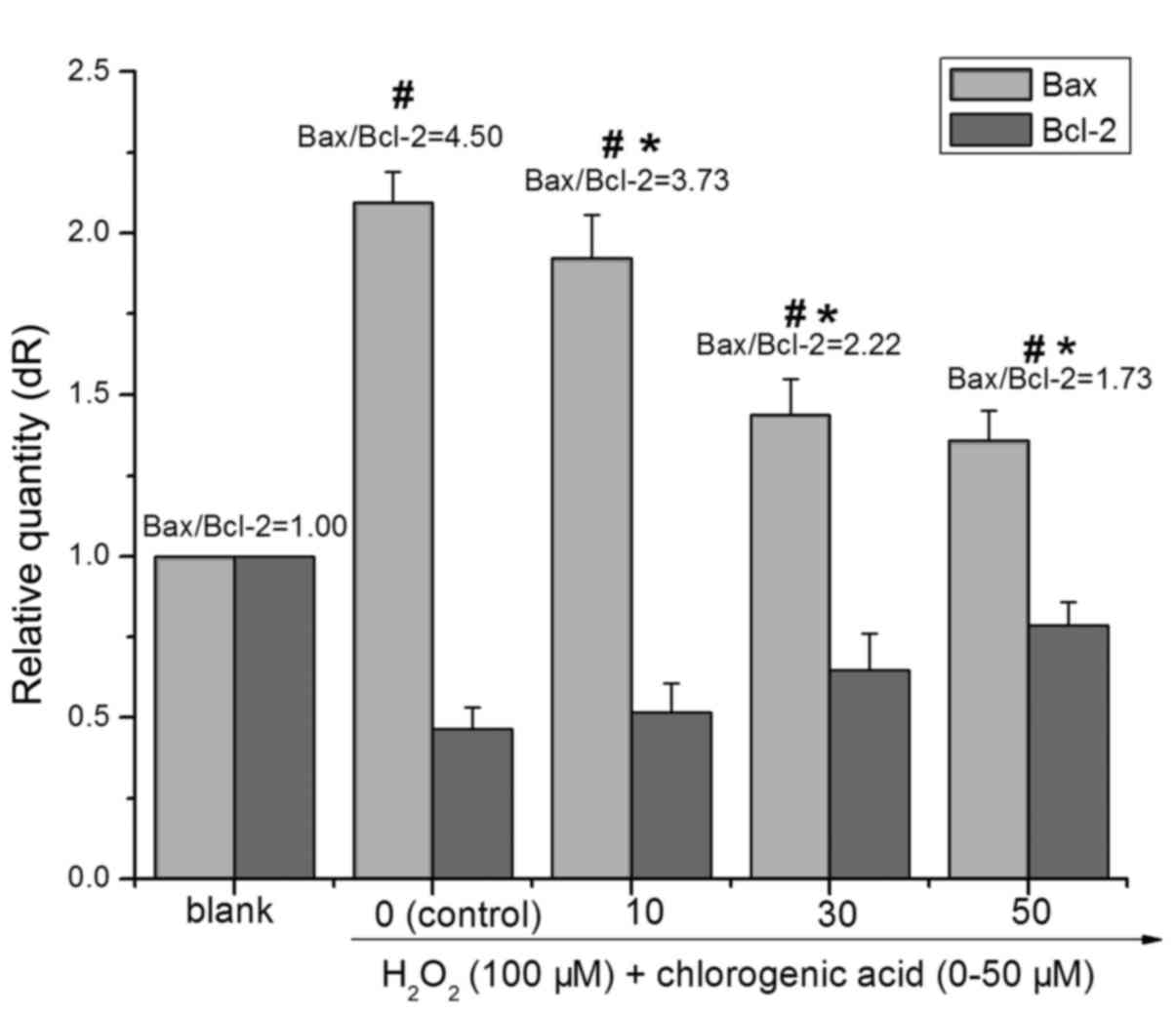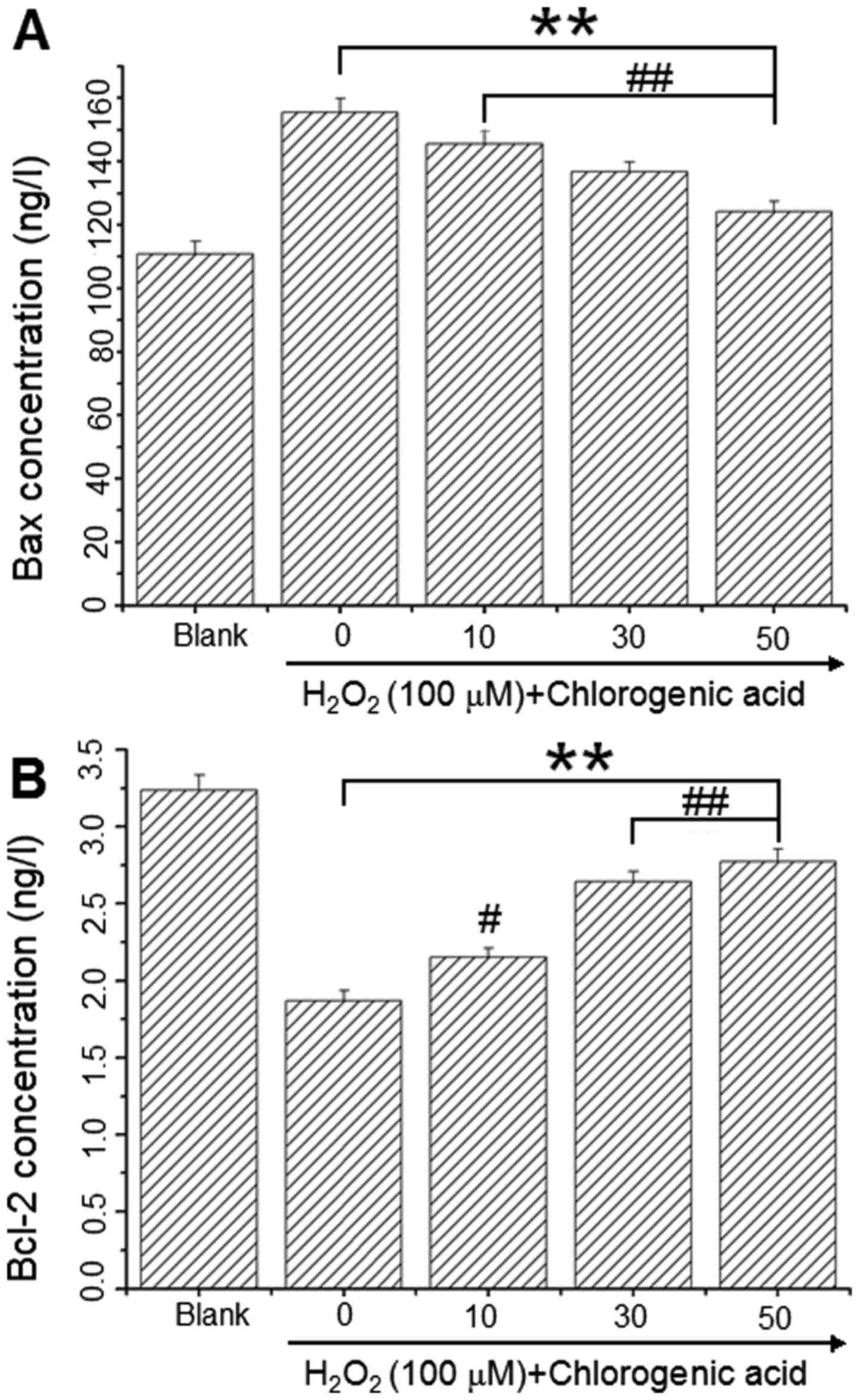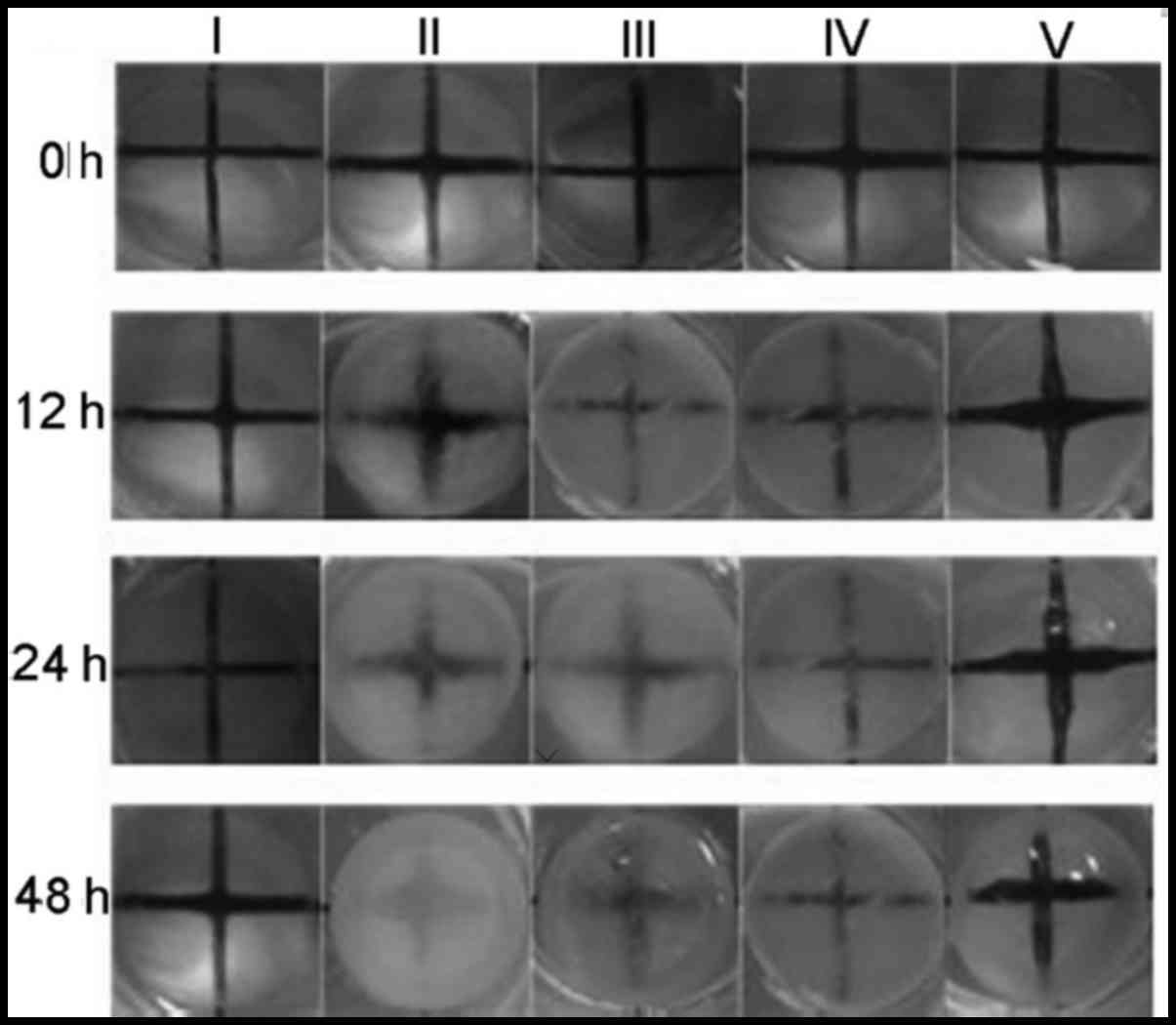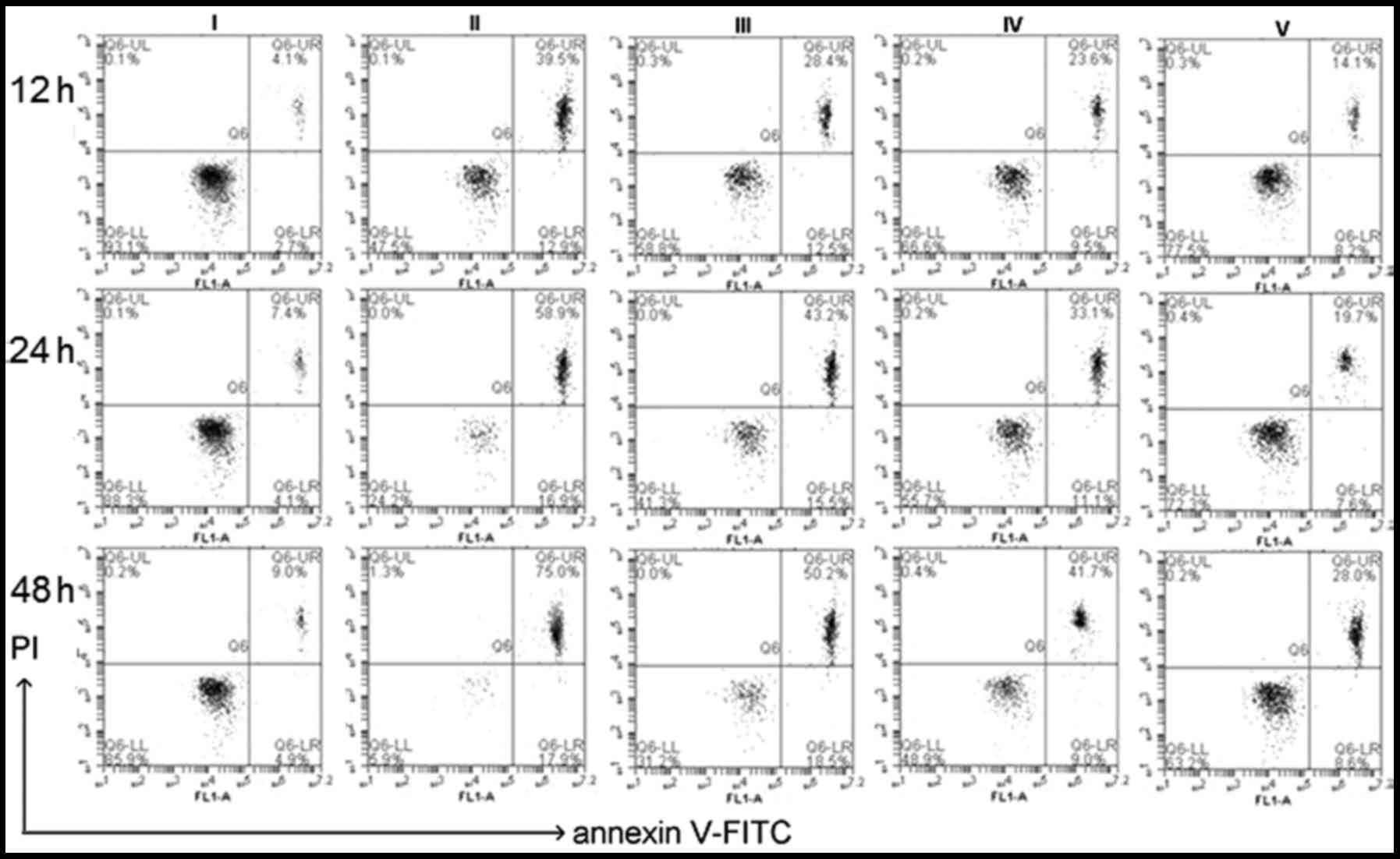|
1
|
Long AC, Colitz CM and Bomser JA:
Apoptotic and necrotic mechanisms of stress-induced human lens
epithelial cell death. Exp Biol Med (Maywood. 229:1072–1080. 2004.
View Article : Google Scholar
|
|
2
|
Kasai H, Fukada S, Yamaizumi Z, Sugie S
and Mori H: Action of chlorogenic acid in vegetables and fruits as
an inhibitor of 8-hydroxydeoxyguanosine formation in vitro and in a
rat carcinogenesis model. Food Chem Toxicol. 38:467–471. 2000.
View Article : Google Scholar : PubMed/NCBI
|
|
3
|
Li SY, Chang CQ, Ma FY and Yu CL:
Modulating effects of chlorogenic acid on lipids and glucose
metabolism and expression of hepatic peroxisome
proliferator-activated receptor-alpha in golden hamsters fed on
high fat diet. Biomed Environ Sci. 22:122–129. 2009. View Article : Google Scholar : PubMed/NCBI
|
|
4
|
Surveswaran S, Cai YZ, Xing J, Corke H and
Sun M: Antioxidant properties and principal phenolic phytochemicals
of Indian medicinal plants from Asclepia and Periplocoideaedeae.
Nat Prod Res. 24:206–221. 2010. View Article : Google Scholar : PubMed/NCBI
|
|
5
|
Truscott RJ: Age-related nuclear
cataract-oxidation is the key. Exp Eye Res. 80:709–725. 2005.
View Article : Google Scholar : PubMed/NCBI
|
|
6
|
Varma SD, Devamanoharan PS and Morris SM:
Prevention of cataracts by nutritional and metabolic antioxidants.
Crit Rev Food Sci Nutr. 35:111–129. 1995. View Article : Google Scholar : PubMed/NCBI
|
|
7
|
Gupta SK, Trivedi D, Srivastava S, Joshi
S, Halder N and Verma SD: Lycopene attenuates oxidative stress
induced experimental cataract development: An in vitro and in vivo
study. Nutrition. 19:794–799. 2003. View Article : Google Scholar : PubMed/NCBI
|
|
8
|
Spector A: Oxidative stress-induced
cataract: Mechanism of action. FASEB J. 9:1173–1182.
1995.PubMed/NCBI
|
|
9
|
Spector A, Wang GM, Wang RR, Li WC and
Kleiman NJ: A brief photochemically induced oxidative insult causes
irreversible lens damage and cataract. II. Mechanism of action. Exp
Eye Res. 60:483–493. 1995. View Article : Google Scholar : PubMed/NCBI
|
|
10
|
Csukas S, Costarides A, Riley MV and Green
K: Hydrogen peroxide in the rabbit anterior chamber: Effects on
glutathione, and catalase effects on peroxide kinetics. Curr Eye
Res. 6:1395–1402. 1987. View Article : Google Scholar : PubMed/NCBI
|
|
11
|
Spector A, Ma W, Sun F, Li D and Kleiman
NJ: The effect of H2O2 and tertiary butyl hydroperoxide upon a
murine immortal lens epithelial cell line, alpha TN41. Exp Eye Res.
75:573–582. 2002. View Article : Google Scholar : PubMed/NCBI
|
|
12
|
Spector A and Garner WH: Hydrogen peroxide
and human cataract. Exp Eye Res. 33:673–681. 1981. View Article : Google Scholar : PubMed/NCBI
|
|
13
|
Reddan JR, Giblin FJ, Dziedzic DC,
Wirebaugh BM and Peters JL: Hydrogen peroxide affects specific
epithelial subpopulations in cultured rabbit lenses. Invest
Ophthalmol Vis Sci. 36:289–299. 1995.PubMed/NCBI
|
|
14
|
Jia Z, Song Z, Zhao Y, Wang X and Liu P:
Grape seed proanthocyanidin extract protects human lens epithelial
cells from oxidative stress via reducing NF-кB and MAPK protein
expression. Mol Vis. 17:210–217. 2011.PubMed/NCBI
|
|
15
|
Tang X, Yao K, Zhang L, Yang Y and Yao H:
Honokiol inhibits H(2)O(2)-induced apoptosis in human lens
epithelial cells via inhibition of the mitogen-activated protein
kinase and Akt pathways. Eur J Pharmacol. 650:72–78. 2011.
View Article : Google Scholar
|
|
16
|
Yang J, Cai L, Zhang S, Zhu X, Zhou P and
Lu Y: Silica-based cerium (III) chloride nanoparticles prevent the
fructose-induced glycation of α-crystallin and
H2O2-induced oxidative stress in human lens
epithelial cells. Arch Pharm Res. 37:404–411. 2014. View Article : Google Scholar
|
|
17
|
Gugliucci A and Bastos DH: Chlorogenic
acid protects paraoxonase 1 activity in high density lipoprotein
from inactivation caused by physiological concentrations of
hypochlorite. Fitoterapia. 80:138–142. 2009. View Article : Google Scholar : PubMed/NCBI
|
|
18
|
Gugliucci A, Bastos DH, Schulze J and
Souza MF: Caffeic and chlorogenic acids in Ilex paraguariensis
extracts are the main inhibitors of AGE generation by methylglyoxal
in model proteins. Fitoterapia. 80:339–344. 2009. View Article : Google Scholar : PubMed/NCBI
|
|
19
|
Kim C, Yu HG and Sohn J: The
anti-angiogenic effect of chlorogenic acid on choroidal
neovascularization. Korean J Ophthalmol. 24:163–168. 2010.
View Article : Google Scholar : PubMed/NCBI
|
|
20
|
Kuszak Li WC, Dunn JR, Wang K, Ma RR, Wang
W, Spector GM, Leib A, Cotliar M, Weiss AMM, et al: Lens epithelial
cell apoptosis appears to be a common cellular basis for
non-congenital cataract development in humans and animals. J Cell
Biol. 130:169–181. 1995. View Article : Google Scholar : PubMed/NCBI
|
|
21
|
Spector A, Wang GM, Wang RR, Li WC and
Kuszak JR: A brief photochemically induced oxidative insult causes
irreversible lens damage and cataract. I. Transparency and
epithelial cell layer. Exp Eye Res. 60:471–481. 1995c. View Article : Google Scholar
|
|
22
|
Kim YS, Kim NH, Lee YM and Kim JS:
Preventive effect of chlorogenic acid on lens opacity and
cytotoxicity in human lens epithelial cells. Biol Pharm Bull.
34:925–928. 2011. View Article : Google Scholar : PubMed/NCBI
|
|
23
|
Akila P and Vennila L: Chlorogenic acid a
dietary polyphenol attenuates isoproterenol induced myocardial
oxidative stress in rat myocardium: An in vivo study. Biomed
Pharmacother. 84:208–214. 2016. View Article : Google Scholar : PubMed/NCBI
|
|
24
|
Ye HY, Li ZY, Zheng Y, Chen Y, Zhou ZH and
Jin J: The attenuation of chlorogenic acid on oxidative stress for
renal injury in streptozotocin-induced diabetic nephropathy rats.
Arch Pharm Res. 39:989–997. 2016. View Article : Google Scholar : PubMed/NCBI
|
|
25
|
Livak KJ and Schmittgen TD: Analysis of
relative gene expression data using real-time quantitative PCR and
the 2(−Delta Delta C(T)) Method. Methods. 25:402–408. 2001.
View Article : Google Scholar
|
|
26
|
Guide for Care and Use of Laboratory
Animals: NIH Publication No. 80-23. Washington, D.C.: National
Academy Press; 1996
|
|
27
|
Koushan SS, Behzad B, Masoumeh M, Vahid K
and Fatemeh ZS: Studies on the cytotoxic activities of Punica
granatum L. var. spinosa (apple punice) extract on prostate cell
line by induction of apoptosis. ISRN Pharm. 2012:1–6. 2012.
|
|
28
|
Burlacu A: Regulation of apoptosis by
Bcl-2 family proteins. J Cell Mol Med. 7:249–257. 2003. View Article : Google Scholar : PubMed/NCBI
|
|
29
|
Wu ZM, Yin XX, Ji L, Gao YY, Pan YM, Lu Q
and Wang JY: Ginkgo biloba extract prevents against apoptosis
induced by high glucose in human lens epithelial cells. Acta
Pharmacol Sin. 29:1042–1050. 2008. View Article : Google Scholar : PubMed/NCBI
|
|
30
|
Mao YW, Xiang H, Wang J, Korsmeyer S,
Reddan J and Li DW: Human bcl-2 gene attenuates the ability of
rabbit lens epithelial cells against
H2O2-induced apoptosis through
down-regulation of the α B-crystallin gene. J Biol Chem.
276:43435–43445. 2001. View Article : Google Scholar : PubMed/NCBI
|
|
31
|
Soluk Tekkeşın M, Mutlu S and Olgaç V:
Expressions of bax, bcl-2 and Ki-67 in odontogenic keratocysts
(Keratocystic Odontogenic Tumor) in comparison with ameloblastomas
and radicular cysts. Turk Patoloji Derg. 28:49–55. 2012.
|
|
32
|
Charakidas A, Kalogeraki A, Tsilimbaris M,
Koukoulomatis P, Brouzas D and Delides G: Lens epithelial apoptosis
and cell proliferation in human age-related cortical cataract. Eur
J Ophthalmol. 15:213–220. 2005.PubMed/NCBI
|















